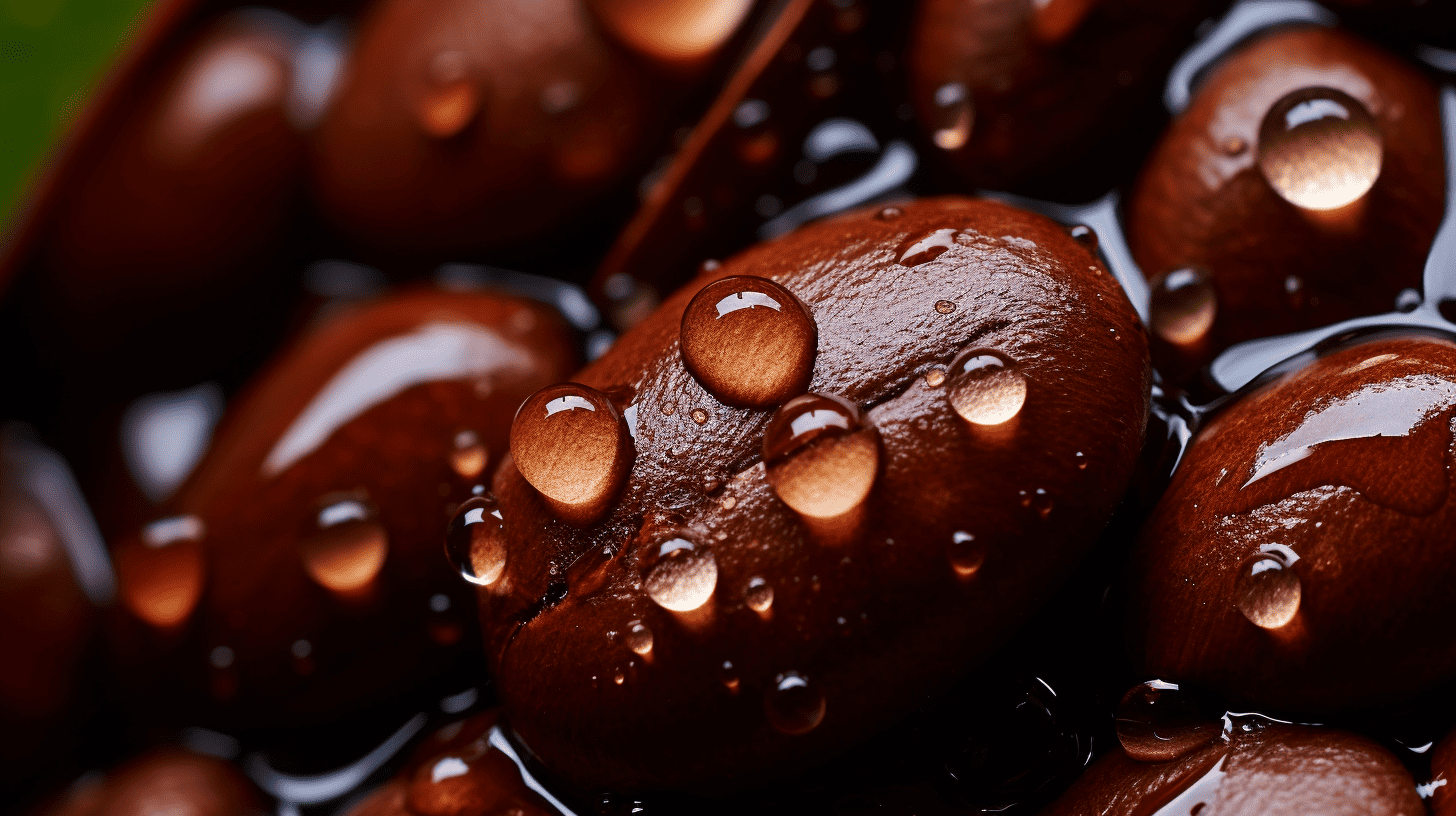Are you a coffee lover like myself, but wondered is coffee an acid or base? I’ve also questioned whether my beloved brew was friend or foe.
After digging through countless research papers, I found out that coffee indeed has a pH level of 5.0, making it slightly acidic. But don’t let this stop your love for java! This article will guide you through the wonderful world of acidity in coffee, explaining why it’s not all bad news and how to adjust your brew to make it less acidic.
So grab your cup of joe and keep reading; there’s much we can learn together about our favorite beverage.
Key Takeaways
- Coffee is slightly acidic with a pH level of around 5.0.
- The acidity in coffee comes from natural acids like chlorogenic acid and citric acid.
- The presence of caffeine in coffee adds to its overall acidity, but other compounds also contribute.
- Acidic coffee can have negative effects on heart rate and blood pressure, as well as potentially harm tooth enamel.
- There are ways to make your coffee less acidic, such as cold brewing, choosing a dark roast, shortening brew time, adding eggshells to the grounds, or using fine-ground coffee beans.
Understanding the pH Scale and Coffee’s Acidity
The pH scale is used to measure the acidity or basicity of a substance, with values ranging from 0 (most acidic) to 14 (most basic). For coffee, its acidity can be measured within a range of 4.85 to 5.10 on the pH scale.
Definition of acidity and basicity on the pH scale
The pH scale shows if something is acid or base. It ranges from 0 to 14. A pH of 7 is neutral, like pure water. Anything below 7 is acidic and anything above 7 is basic. Acid things taste sour and can sting you like a bee sting! Basic things often taste bitter.
Coffee has a pH level around 5, so it falls into the acid zone on this scale. The acids in it give coffee its unique flavors that we all love!
pH range of coffee (4.85 to 5.10)
Coffee has a pH range of 4.85 to 5.10, which means it is slightly acidic in nature. This acidity is due to the presence of natural acids like chlorogenic acid and citric acid in coffee beans.
Even though coffee contains caffeine, which is an alkaloid, brewed coffee still falls on the acidic side of the pH scale. It’s important to note that this pH range may vary slightly depending on factors such as brewing time and bean type.
Reasons for Coffee’s Acidity
Caffeine, along with other compounds found in coffee, contribute to its acidity.
Presence of caffeine
Caffeine is a key component in coffee that contributes to its acidity. Despite caffeine being an alkaloid, brewed coffee still remains slightly acidic. The presence of caffeine adds to the overall acidity level of coffee.
Other compounds contributing to acidity
Coffee’s acidity is not solely due to caffeine. There are other compounds in coffee that contribute to its overall acidity. One such compound is chlorogenic acid, which is found in high amounts in coffee beans.
Chlorogenic acid adds a sour and tart taste to the brew. Additionally, polyphenols and tannins also contribute to the acidity of coffee. These compounds are commonly found in many fruits and plants and add bitterness to the flavor profile of coffee.
So, while caffeine does play a role, it’s important to recognize that there are several other compounds that contribute to the overall acidity of coffee.
Side Effects of Acidic Coffee
Acidic coffee can have negative effects on heart rate and blood pressure.
Impact on heart rate and blood pressure
Drinking coffee can affect your heart rate and blood pressure. The caffeine content in coffee stimulates the release of adrenaline, which can cause an increase in heart rate. This effect may be more pronounced if you have a sensitivity to caffeine or consume large amounts of coffee.
In some cases, high doses of caffeine can also lead to temporary spikes in blood pressure. If you already have high blood pressure or heart conditions, it’s important to monitor your coffee intake and discuss with your healthcare provider how much is safe for you.
Potential damage to tooth enamel
The acidity in coffee can potentially harm our tooth enamel. Coffee contains acids like chlorogenic acid, which can wear down the protective layer of our teeth over time. When this happens, it increases the risk of cavities and tooth sensitivity.
It’s important to take care of our dental health by brushing our teeth regularly and drinking water after consuming acidic beverages like coffee to help rinse away any lingering acidity.

Ways to Make Your Coffee Less Acidic
There are a few simple methods to make your coffee less acidic, such as cold brewing, choosing a dark roast, shortening brew time, adding eggshells to the grounds, or using fine ground coffee beans.
Cold brewing
To make your coffee less acidic, one option is to try cold brewing. Cold brewing involves steeping coffee grounds in cold water for an extended period, usually around 12 to 24 hours.
This method creates a smoother and less acidic cup of coffee compared to hot brewing methods. The longer steeping time allows for a slower extraction process, resulting in lower acidity levels.
Cold brewing also highlights different flavor profiles of the coffee beans, giving you a unique and milder taste experience. So if you’re looking for a way to enjoy your morning caffeine fix without the acidity, give cold brewing a try!
Choosing a dark roast
I prefer to choose a dark roast when brewing my coffee. Dark roasted beans have been roasted for a longer time, resulting in a bolder and stronger flavor. They also tend to have lower acidity than lighter roasts, which can be beneficial for those who are sensitive to acidity or experience discomfort after drinking acidic beverages.
So if you’re looking for a coffee with rich flavors and less acidity, go ahead and try out a dark roast!
Shortening brew time
Shortening the brew time is another way to make your coffee less acidic. When you shorten the brewing process, there is less time for the acids in the coffee beans to be extracted, resulting in a smoother and less acidic cup of coffee.
This can be done by using a higher water-to-coffee ratio or adjusting the grind size to speed up extraction. By reducing acidity, you can enjoy a milder flavor without compromising on taste.
So, if you prefer a less acidic coffee, consider experimenting with different brewing techniques that allow for shorter brew times.
Adding eggshells
If you want to make your coffee less acidic, one option is to add eggshells. Eggshells are alkaline, which means they can help neutralize the acidity in your coffee. All you have to do is crush some clean and dried eggshells and mix them with your coffee grounds before brewing.
The alkaline properties of the eggshells will help balance out the acidity, resulting in a smoother cup of coffee. Plus, using eggshells is an affordable and natural way to reduce acidity without affecting the taste of your coffee!

Using fine ground coffee beans
Using fine ground coffee beans can help reduce the acidity levels in your cup of coffee. When you grind your beans finely, it increases the surface area exposed to water during brewing.
This allows for a faster extraction process and results in a smoother and less acidic brew. Fine ground coffee also tends to have a more robust flavor profile, as the smaller particles release more oils and compounds that contribute to taste.
So if you prefer a less acidic and bolder tasting cup of coffee, using fine ground beans is worth giving a try!
Conclusion: Coffee’s acidity and its impact on health and taste
Coffee is slightly acidic with a pH level of around 5.0. The natural acids in coffee beans contribute to its acidity, and even though it contains caffeine, which is an alkaloid, brewed coffee remains slightly acidic.
This acidity can have an impact on both our health and the taste of the coffee we drink.
Is Coffee Free on Royal Caribbean Cruises?
Coffee availability on royal caribbean cruises varies depending on the ship and itinerary. While some ships offer complimentary coffee at select venues, others may charge an additional fee for specialty coffee beverages. It is advisable to check with the specific cruise line or consult the ship’s daily schedule to determine the availability and cost of coffee on board.
FAQs on Is Coffee An Acid Or Base
1. Is coffee an acid or base?
Coffee is considered to be acidic, with a pH level ranging from 4.85 to 5.10.
2. Does the acidity of coffee affect its taste?
Yes, the acidity of coffee contributes to its flavor profile and can impact the perceived taste, making it more bright and vibrant.
3. Can drinking too much acidic coffee harm my health?
While consuming moderate amounts of acidic coffee is generally safe for most people, excessive consumption can potentially contribute to stomach discomfort or exacerbate existing gastrointestinal issues.
4. Are there any ways to reduce the acidity in coffee?
Yes, if you find that highly acidic coffee bothers your stomach or prefer a less acidic taste, you can try brewing methods such as cold brewing or using low-acid beans specifically designed for individuals sensitive to acidity.





Leave a Reply